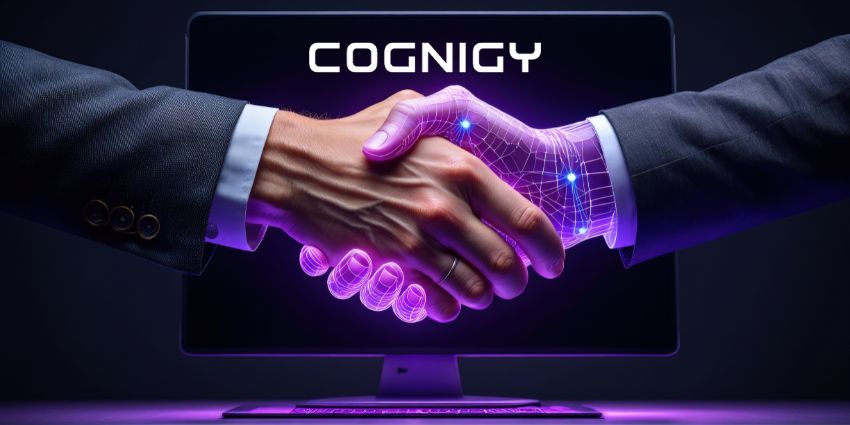Voice Extensible Markup Language or VoiceXML/VXML is a standard developed by the World Wide Web Consortium (W3C) for creating interactive voice dialogues.
Essentially, VoiceXML is to voice applications what HTML is to the web – it lets users leverage the web infrastructure already available for HTML to develop and deploy voice-based apps.
First launched in 2000, this standard for telephony controls remains relevant two decades on.
Understanding the Origins of VoiceXML
In March of 2000, a group of 500+ companies called the VoiceXML Forum first published the document’s version 1.0.
Since then, it has handed over ownership of the standard to W3C and supports individuals/organizations developing apps using VoiceXML.
It powers almost all voice-based UIs, despite its legacy nature. That’s because of its simple core value proposition – enabling a voice browser where audio and keypad inputs are necessary to generate audio output.
In the context of modern app development, VoiceXML predates current programming languages – such as Python, Node.JS, etc. – and aligns best with Java-based applications. The most recent release of VoiceXML was in 2007, when version 2.1 came into being.
But does this mean that the VoiceXML standard is no longer essential or is irrelevant to CX? The answer is a resounding NO. After all, it is still commonly used in IVR systems.
Why VoiceXML Continues to be Integral to Telephony and CX
The closest replacement to VoiceXML is a deep neural network (DNN)-based speech-to-text, which processes audio input and generates audio output with far greater prowess and sophistication.
However, mature DNN technologies remain rare, and most companies are happy with partially modernizing VoiceXML apps into a JSON/YAML-friendly architecture. These architectures support integrations with RESTful APIs using web call-backs.
Moreover, VoiceXML is doubly relevant due to the more recent launch of CCXML.
CCXML adds to VoiceXML’s capabilities by introducing more granular call controls such as multi-participant conferencing and outgoing calls.
If doubts remain over VoiceXML’s readiness to take on the challenges of modern telephony, consider the VoiceXML Forum’s 2021 announcement to provide VoiceXML pioneers with $25,000 in grants.
Among the grant recipients is a researcher who developed a VoiceXML virtual agent for Alzheimer’s and dementia patient caregivers.
The Benefits of VoiceXML
While it is older than most programming languages today’s developers are familiar with, VoiceXML still holds many advantages over its more modern alternatives.
Indeed, it remains a core component of the CX landscape for a few key reasons:
- Easy Utilization: Because VXML shares many similarities with HTML codes, developers can more easily transition to VXML, as opposed to other programming languages. Indeed, there is a slight learning curve, which means companies can spend their money on something other than training or hiring new developers to use different standards for IVR systems.
- Portability: Because VXML shares many similarities with HTML codes, developers can more easily transition to VXML, as opposed to other programming languages. Indeed, there is a slight learning curve, which means companies can spend their money on something other than training or hiring new developers to use different standards for IVR systems.
- Developer Friendliness: Because VXML shares many similarities with HTML codes, developers can more easily transition to VXML, as opposed to other programming languages. Indeed, there is a slight learning curve, which means companies can spend their money on something other than training or hiring new developers to use different standards for IVR systems.
In addition, the flexibility of the VoiceXML standard means it’s easy for businesses to take advantage of new functionality options for their IVR systems when they emerge.
Most recently, many companies began connecting their technology to AI-driven tools and natural language processing (NLP) systems to create IVR applications with “conversational” capabilities.
Connected with AI technology, VoiceXML applications allow companies to automate various processes and give their clients a self-service experience.
For instance, an IVR system can walk customers through making a purchase or checking on a refund.
Get Started with VoiceXML Applications
Mastering VoiceXML is the first step to developing voice-based applications, as it enables functionalities like playing audio, recognizing speech and DTMF inputs, and controlling call flows.
There are two broad approaches to start developing VoiceXML apps. The first is by using one of the recommended development toolkits by W3C.
Alternatively, businesses may leverage proprietary VoiceXML platforms and enablers from their existing contact center technology vendor.
Genesys, Avaya, and Cisco are among the leading providers to offer this capability.
Learn more about voice technologies in customer experience by watching our interview with Stuart Dorman, Chief Innovation Officer at Sabio, here: The Future of Voice







